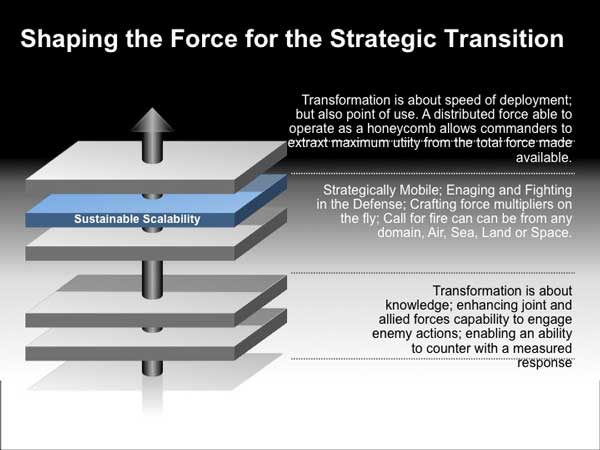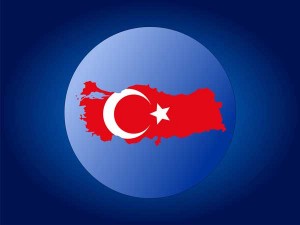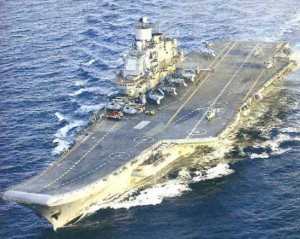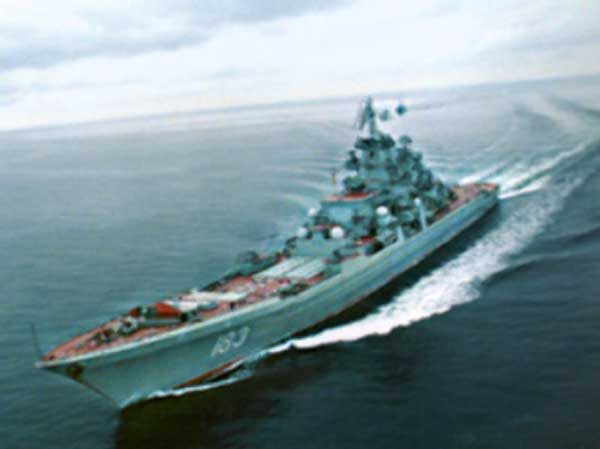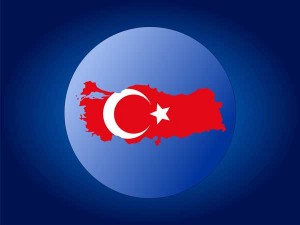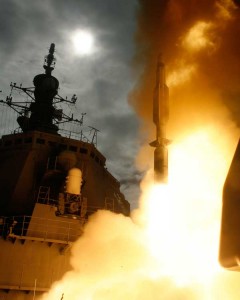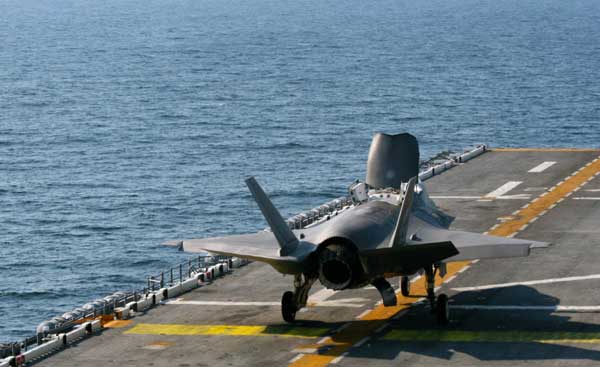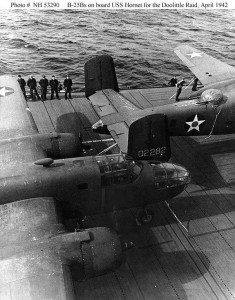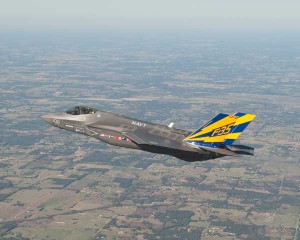11/10/2011 By Michael Wynne
If one recalls the history of the transformation movement, it became embraced by then candidate Bush in his speech at the Citadel and then he followed through on the speech as president. The calls for a revolution in military affairs now became defense transformation.
In all of the services, the pursuit of light, lethal and flexible was leading to the design of programs like the future combat system, the littoral combat ships, and the Joint Strike Fighter. In each case, these platforms were to be a culmination of a trend toward substituting situation awareness and interoperability for mass.
But the enemy had a vote; and in both Operation Enduring Freedom and Iraqi Freedom the policing capacity of the light, lethal, and agile forces that gave a quick and nearly painless toppling of the incumbent regimes became exhausted when long periods of territorial control became the mission.
What followed was on the job training. As the Generals reached back to our efforts in the Philippines in the late 1800’s; to the British and Israeli concepts applied in the 1900’s, two emerging constructs were counter insurgency; and counter terrorism. Both of these concepts have as fundamental assumption of uncontested control of the seas and control of the air; allowing for streaming logistics and for the theater endless resources available to become the theater paymaster.
Though President Bush had specifically indicated many times that he had no interest in nation building, our forces found themselves in fact doing that. In both cases, first in Iraq and then Afghanistan, the course was altered and force imposition was part of the occupation engagement.
Whether through our own decisions or those of the enemy leadership, military leadership began to swarm our forces to suppress insurgencies; while our force trainers rebuilt the nations armed force capability. This required tenacious political and force commanders will to succeed; for which effort outcomes are still into a future fraught with uncertainty.
For American defense, however successful these will be, the turn was real; and caused senior defense officials to declare that for the foreseeable future the nation should embrace non-peer conflict as the only reality and build forces accordingly.
This view was reflected in their decision-making, resulting in generational decisions in strategic weaponry that threatens to narrow or eliminate our superiority on the sea and in the air. Reducing the budget available will potentially pit these domains against each other in a classic you can’t have both air and naval superiority; you must choose.
Curiously, as the nation agrees on a significant drawdown in Afghanistan, what is not being examined are the implications for the next decade of the 21st century. Clearly the structure built in the past decade is not the template, but then what is?
And for strategic defense; the basic truth is clear and not to be forgotten by those who assume global interdependence provides by itself enhanced security:
The only thing more expensive than air and naval supremacy is being second rate in either or both domains against a determined enemy.
In addition were are hearing seasoned leaders place our national debt above our national defense as a priority for our nation; this portends more than any issue of force balance; it asks more fundamentally why did we form a union?
But, in either case, it also puts the moniker ‘best bang for the buck’ in clear relief. What is being sought and has been for multiple decades is less the recent excursion into policing and nation building than the need for force transformation to ‘provide for the common defense’ in the most efficient way possible.
How does our force structure most efficiently use all the available resources to maximize the deterrent and strike capability of each of the services? How can we harness our own technologies to rebuild our air and sea dominance, to bring effectively our army to bear when and where necessary as deterrence fails and regime change is a required action?
This is where force transformation and the concepts of operation it mandates can once again provide a path forward.
What is this relevant concept of transformation in the decade ahead; and how does it relate to the honeycomb and the imperative of the z-axis?
Transformation is about knowledge, getting a clearer picture of the disposition of the joint and allied forces; and their capacity and capability to engage and then understanding the enemy position and intent to enable countering with a measured response.
As we have used and continue to view the digital battlefield, we have learned it is not just about signals, but also about knowledge and getting your command prepared and responding. It is about re-establishing the Clausewitz look at warfare, and the Lanchester military force equations to, with knowledge, puts yourself dominantly in the right side of the casualty count.
It is being able to be strategically mobile in the offense, moving into unoccupied terrain, and engaging and fighting in the defense, where you achieve a natural force multiplier, and indirect fire. A notable example is when close air support can be effectively brought to bear.
Though historically applied to ground combat; aspects of these effects are found in air as well as sea domains; whether placed in the Mahan influence in our modern navy; or in Boyd’s influence in our modern air force; knowledge and effect on enemy strategies; and their combined effect of whole of government diplomacy is the strategic thrust.
These days, each platform can be a source of information and a user; but in fact we have the technology such that platforms can also be a node on the net and operate as the center of a cell for the deployed forces seen as a honeycomb. Making them a node on the net, one of the crown achievements for the Aegis system, as well as the Joint Strike Fighter, and a functional element of the remnant of the future combat system makes the total network more reliable and robust and allows for distributed operations and a honeycomb like capability.
But taken as well to tactics, the honeycomb approach to maritime domain awareness, and the benefit of the z-axis to future fights in any domain are clear. Knowledge as an asset of command is clear; and therefore the getting and dissemination of that knowledge through concepts of shared situation awareness becomes a strategic imperative in all aspects of diplomacy and warfare, each famously an extension of each other.
Sight pictures must be shared. The forces can now operate scattered or distributed. No one person or crew owns a target anymore. There is no front line, as that term has historically been known. On such a battlefield, support forces can be as vulnerable as combat forces. This shared vulnerability must be bolstered by knowledge that support is not far away, but it may not be line of sight.
Such a battlefield favors those with the most shared information, which can be acted upon in the most effective manner possible.
But only if that information can assure its users as to who and where are the good guys, and who and where are the bad guys. Interoperability shortens the kill chain for our intentionally initially outnumbered forces and allows them to prosecute their attacks with speed and maneuver. This means inside the decision cycle of the enemy. In spite of the low casualty rate as the engagements began, the percentage that was blue on blue remained unacceptably high. Blue on blue is the only engagement that is sure loser. We must use the power of our information dominance to cut this percentage to zero.
Transformation is about culture as well. It is accepting that joint tactical air controllers may well be of subordinate rank as they call for and direct with devastating effect indirect fire to claim victory. It is recognition of the horizontal nature of the battlefield; and the reality of overwhelming force application at the point of need.
It is about joint support across command authorities; and many times allied authorities to maximize total capacity for victory. It is about the capability to match vetted targets with appropriate shooters; such that the shooters relinquish authority of their weaponry to the combined force operations center.
A call for fire can be from any domain, air, sea, land, or space; and if there is a shooter appropriate to that target; a determined and positive response. This is one of those concepts that ‘says easy, but does hard’ and will require culture changes, but at ‘end of day’ will be seen as a necessary and required response to the speed and totality of next generation warfare.
Transformation can be about equipment, but when the Romans decided to gather themselves into diamond-shaped formations called phalanxes, it wasn’t about the spear. When Confederate General Jackson double-timed the troops in the Shenandoah creating the impression of a far larger force, it wasn’t about the rifles.
That isn’t to say that equipment doesn’t make a difference, it does say that there is much to be gained if the equipment is fully exploited. The honeycomb and the exploited z-axis are meant to allow commanders to extract maximum utility from the total force made available.
The real push for transformation must come from visionary leadership. Without this push toward jointness and trust in the joint force doctrine and the interoperability sharing involves; technology has as well the ability reduce a transformed military to a platform driven entity, just as hidebound, inflexible, unimaginative, and culturally circumscribed as history would describe.
Transformation is about speed, given a return to set positions; even with pre-positioned stocks; our withdrawal from some foreign bases was even explored during Dr. Ash Carter’s recent confirmation hearing to become Deputy Secretary of Defense as an expedient means of reducing the expenditure on defense. As a nation we are returning to a basing concept that places our heavy forces here in the United States; and thus requires an expeditionary armed force.
This implies speed of deployment; but also to point of use; and they may be close at hand in terms of time and space.
Though we know very well what this entails; and we have force deployment models that can illustrate what we can muster across the spectrum of warfare and at what distance; our force structure continues to put a lesser priority on the reliability and maintainability of the equipment.
As Heinz Guderian said “Logistics is the ball and chain of armored warfare”. We need to concentrate on the logistics footprint to minimize the time from incident to reaction in all cases. There is presently and will be for the foreseeable future a tremendous emphasis on reducing the logistics footprint, and therefore expanding the response options.
The Joint Strike Fighter concepts of maintenance and availability between all the services and among all of the coalition of the willing will be a huge improvement for mechanical and electrical components. The advance in stealth repair allows for battle damage repair in fleet or in bases around the globe.
Transformation is about accuracy, and correctly engineering the delivered weapons; or weaponeering for the platforms they are released from, aimed from, or defending. The business end of each and every platform and the translation of intent from each unit commander is core to success. Though as an industry/government partnership, there is much time spent on the speed, agility and being able to dramatically reduce collateral damage, target much closer to our forces; and so there is a tremendous investment in precision munitions as well as the means of guidance and delivery.
Both in the offense and in the defense, the technology in the electronic and mechanical spectrum is offering close in and standoff systems; but all will need target geo-location; and target lock for fire and forget devices. Swarms will require multiple engagement, and multiple kills possibly as an extension of the manned shooter; or semi automatic.
As if to underline this seriousness there is a need to define a future that assures the continued survival for the United States and allow it the full range for diplomacy and diplomatic options.
Reaching back to a strategy expressed just prior to the turn in our operations, there was an expressed need to build and maintain our defenses beyond challenge. There was a determination that, “The U.S. must and will maintain the capability to defeat any attempt by an enemy to impose its will on us, on our friends, and on our allies.”
This strategy then got specific, “Our forces will be strong enough to dissuade potential adversaries from pursuing a military build-up in hopes of surpassing or equaling the power of the United States.”
This philosophy of defense transformation could be reduced to a bumper sticker; it might read “NO FAIR FIGHTS.” Something to think about as the future unfolds and we determine by our actions whether or not we shape the world or simply respond to piecemeal problems until these problems congeal into a very major one.
(This is a contribution to the Strategic Whiteboard https://sldinfo.com/resources/strategic_whiteboard/).


